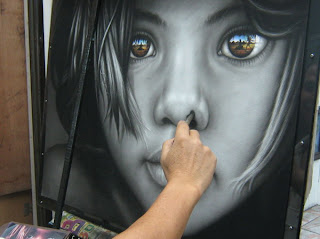The next step was then to figure out what it was that I wanted to say about myself. After looking through some more recent photos and thinking about things that are important to me, I realized that though possibly still being influenced from my summer traveling high caused from my trip to Ecuador and the Galapagos Islands, that traveling and exploring new cultures and places is something that I really value, treasure, and would like to foresee in my future.
Ideas of elements to incorporate in my portrait to convey this importance of traveling and experiences:
As a young kid my mom would always give colorful thread to my sisters and I to make bracelets with. We would learn different knots from our cousins, friends and bracelet making books and used all sorts of different color variations. I think we actually enjoyed making them more than we liked wearing them cause we always seemed to have more bracelets and anklets than we could fit on our wrists. Over the years that phase would come and go as it pleased and just recently in the past year or two it showed up again. Not only did I remember many of the patterns of my past, but I also looked up and learned some new patterns. This began my collection of bracelets on my wrist. My collection grew when going abroad this summer. Ever since, bracelets seem to come and go on my wrist as old ones wear out and fall off and new ones get added from places I've been, gifts from people I know, and experiences I've had. Their representational role could be useful in my portrait.
As I mentioned earlier, traveling is something that although I haven't done a great deal in my life so far, it is something I desire for in my future. So for my portrait I think the idea of keeping an eye on the future and looking out into the world, but not really focusing on one specific spot is something I want to include. I think the gaze of the eyes would have a big role in depicting this as well as the scale of the portrait. A large scale can make the portrait possible less associated with the past or present time and maybe gear it more towards a bigger idea of the future. Where the eyes are gazing I think is also important. Though I think they should be lookout from the canvas, I think there should be a distinction made between looking out and over, not at the viewer.
 |
| Francoise Nielly |
 |
| Stephen Martyn Welch |
 |
| Artist Unknown |












